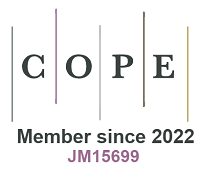REFERENCES
1. Targhan, H.; Evans, P.; Bahrami, K. A review of the role of hydrogen peroxide in organic transformations. J. Ind. Eng. Chem. 2021, 104, 295-332.
2. Fukuzumi, S.; Lee, Y.; Nam, W. Recent progress in production and usage of hydrogen peroxide. Chin. J. Catal. 2021, 42, 1241-52.
3. Lee, K.; Lim, J.; Lee, M. J.; et al. Structure-controlled graphene electrocatalysts for high-performance H2O2 production. Energy. Environ. Sci. 2022, 15, 2858-66.
4. Campos-Martin, J. M.; Blanco-Brieva, G.; Fierro, J. L. Hydrogen peroxide synthesis: an outlook beyond the anthraquinone process. Angew. Chem. Int. Ed. Engl. 2006, 45, 6962-84.
5. Yang, S.; Verdaguer-Casadevall, A.; Arnarson, L.; et al. Toward the decentralized electrochemical production of H2O2: a focus on the catalysis. ACS. Catal. 2018, 8, 4064-81.
6. Perry, S. C.; Pangotra, D.; Vieira, L.; et al. Electrochemical synthesis of hydrogen peroxide from water and oxygen. Nat. Rev. Chem. 2019, 3, 442-58.
7. Pang, Y.; Xie, H.; Sun, Y.; Titirici, M.; Chai, G. Electrochemical oxygen reduction for H2O2 production: catalysts, pH effects and mechanisms. J. Mater. Chem. A. 2020, 8, 24996-5016.
8. Zhang, Y. L.; Goh, K.; Zhao, L.; et al. Advanced non-noble materials in bifunctional catalysts for ORR and OER toward aqueous metal-air batteries. Nanoscale 2020, 12, 21534-59.
9. Li, Y.; Li, Q.; Wang, H.; Zhang, L.; Wilkinson, D. P.; Zhang, J. Recent progresses in oxygen reduction reaction electrocatalysts for electrochemical energy applications. Electrochem. Energ. Rev. 2019, 2, 518-38.
10. Papanikolaou, G.; Centi, G.; Perathoner, S.; Lanzafame, P. Catalysis for e-chemistry: need and gaps for a future de-fossilized chemical production, with focus on the role of complex (direct) syntheses by electrocatalysis. ACS. Catal. 2022, 12, 2861-76.
11. Verdaguer-Casadevall, A.; Deiana, D.; Karamad, M.; et al. Trends in the electrochemical synthesis of H2O2: enhancing activity and selectivity by electrocatalytic site engineering. Nano. Lett. 2014, 14, 1603-8.
12. Jirkovský, J. S.; Panas, I.; Ahlberg, E.; Halasa, M.; Romani, S.; Schiffrin, D. J. Single atom hot-spots at Au-Pd nanoalloys for electrocatalytic H2O2 production. J. Am. Chem. Soc. 2011, 133, 19432-41.
13. Wu, S.; Yu, L.; Wen, G.; Xie, Z.; Lin, Y. Recent progress of carbon-based metal-free materials in thermal-driven catalysis. J. Energy. Chem. 2021, 58, 318-35.
14. Jaryal, V. B.; Villa, A.; Gupta, N. Metal-free carbon-based nanomaterials: insights from synthesis to applications in sustainable catalysis. ACS. Sustainable. Chem. Eng. 2023, 11, 14841-65.
15. Tuci, G.; Pilaski, M.; Ba, H.; et al. Unraveling surface basicity and bulk morphology relationship on covalent triazine frameworks with unique catalytic and gas adsorption properties. Adv. Funct. Mater. 2017, 27, 1605672.
16. Yang, L.; Shui, J.; Du, L.; et al. Carbon-based metal-free ORR electrocatalysts for fuel cells: past, present, and future. Adv. Mater. 2019, 31, e1804799.
17. Li, Y.; Tong, Y.; Peng, F. Metal-free carbocatalysis for electrochemical oxygen reduction reaction: activity origin and mechanism. J. Energy. Chem. 2020, 48, 308-21.
18. He, H.; Liu, S.; Liu, Y.; et al. Review and perspectives on carbon-based electrocatalysts for the production of H2O2 via two-electron oxygen reduction. Green. Chem. 2023, 25, 9501-42.
19. Sang, Z.; Hou, F.; Wang, S.; Liang, J. Research progress on carbon-based non-metallic nanomaterials as catalysts for the two-electron oxygen reduction for hydrogen peroxide production. New. Carbon. Mater. 2022, 37, 136-51.
20. Zhou, W.; Xie, L.; Gao, J.; et al. Selective H2O2 electrosynthesis by O-doped and transition-metal-O-doped carbon cathodes via O2 electroreduction: a critical review. Chem. Eng. J. 2021, 410, 128368.
21. Shen, X.; Wang, Z.; Guo, H.; Lei, Z.; Liu, Z.; Wang, L. Solvent engineering of oxygen-enriched carbon dots for efficient electrochemical hydrogen peroxide production. Small 2023, 19, e2303156.
22. Sun, F.; Yang, C.; Qu, Z.; et al. Inexpensive activated coke electrocatalyst for high-efficiency hydrogen peroxide production: coupling effects of amorphous carbon cluster and oxygen dopant. Appl. Catal. B. Environ. 2021, 286, 119860.
23. Zhang, D.; Tsounis, C.; Ma, Z.; et al. Highly selective metal-free electrochemical production of hydrogen peroxide on functionalized vertical graphene edges. Small 2022, 18, e2105082.
24. Tuci, G.; Rossin, A.; Saki, Z.; et al. The still elusive role of lightweight doping in carbon-based electrocatalysts for the selective oxygen reduction reaction to hydrogen peroxide. ChemSusChem 2024, 17, e202400660.
25. Tuci, G.; Rossin, A.; Zhang, X.; et al. Metal-free electrocatalysts for the selective 2e- oxygen reduction reaction: a never-ending story? Chemistry 2023, 29, e202301036.
26. Tuci, G.; Rossin, A.; Zhang, X.; Pham-Huu, C.; Giambastiani, G. Exohedrally functionalized carbon-based networks as catalysts for electrochemical syntheses. Curr. Opin. Green. Sustain. Chem. 2022, 33, 100579.
27. Samorì, C.; Sainz, R.; Ménard-Moyon, C.; et al. Potentiometric titration as a straightforward method to assess the number of functional groups on shortened carbon nanotubes. Carbon 2010, 48, 2447-54.
28. Lavagna, L.; Bartoli, M.; Suarez-Riera, D.; Cagliero, D.; Musso, S.; Pavese, M. Oxidation of carbon nanotubes for improving the mechanical and electrical properties of oil-well cement-based composites. ACS. Appl. Nano. Mater. 2022, 5, 6671-8.
29. Fairley, N.; Fernandez, V.; Richard-Plouet, M.; et al. Systematic and collaborative approach to problem solving using X-ray photoelectron spectroscopy. Appl. Surf. Sci. Adv. 2021, 5, 100112.
30. Ceppatelli, M.; Gorelli, F. A.; Haines, J.; Santoro, M.; Bini, R. Probing high-pressure reactions in heterogeneous materials by Raman spectroscopy. Z. Kristallogr. 2014, 229, 83-91.
31. Ferrari, A. C.; Robertson, J. Interpretation of Raman spectra of disordered and amorphous carbon. Phys. Rev. B. 2000, 61, 14095-107.
32. Ferrari, A. C.; Robertson, J. Resonant Raman spectroscopy of disordered, amorphous, and diamondlike carbon. Phys. Rev. B. 2001, 64, 075414.
33. Lucchese, M.; Stavale, F.; Ferreira, E. M.; et al. Quantifying ion-induced defects and Raman relaxation length in graphene. Carbon 2010, 48, 1592-7.
34. Wang, Y.; Zhang, D.; Liu, H. A study of the catalysis of cobalt hydroxide towards the oxygen reduction in alkaline media. J. Power. Sources. 2010, 195, 3135-9.
35. Chen, Y.; Wang, S.; Li, Z. A cobalt-pyrrole coordination compound as high performance cathode catalyst for direct borohydride fuel cells. RSC. Adv. 2020, 10, 29119-27.
36. Dong, K.; Liang, J.; Wang, Y.; et al. Honeycomb carbon nanofibers: a superhydrophilic O2-entrapping electrocatalyst enables ultrahigh mass activity for the two-electron oxygen reduction reaction. Angew. Chem. Int. Ed. Engl. 2021, 60, 10583-7.
37. Jun, L. Y.; Mubarak, N.; Yon, L. S.; Bing, C. H.; Khalid, M.; Abdullah, E. Comparative study of acid functionalization of carbon nanotube via ultrasonic and reflux mechanism. J. Environ. Chem. Eng. 2018, 6, 5889-96.
38. Aranovich, G.; Donohue, M. Analysis of adsorption isotherms: lattice theory predictions, classification of isotherms for gas–solid equilibria, and similarities in gas and liquid adsorption behavior. J. Colloid. Interface. Sci. 1998, 200, 273-90.
39. de Menezes, B. R. C.; Ferreira, F. V.; Silva, B. C.; et al. Effects of octadecylamine functionalization of carbon nanotubes on dispersion, polarity, and mechanical properties of CNT/HDPE nanocomposites. J. Mater. Sci. 2018, 53, 14311-27.
40. Mishra, S. K.; Tripathi, S. N.; Choudhary, V.; Gupta, B. D. Surface plasmon resonance-based fiber optic methane gas sensor utilizing graphene-carbon nanotubes-poly(methyl methacrylate) hybrid nanocomposite. Plasmonics 2015, 10, 1147-57.
41. Yu, B.; Wang, X.; Qian, X.; et al. Functionalized graphene oxide/phosphoramide oligomer hybrids flame retardant prepared via in situ polymerization for improving the fire safety of polypropylene. RSC. Adv. 2014, 4, 31782.
42. Stevens, J. S.; Seabourne, C. R.; Jaye, C.; Fischer, D. A.; Scott, A. J.; Schroeder, S. L. Incisive probing of intermolecular interactions in molecular crystals: core level spectroscopy combined with density functional theory. J. Phys. Chem. B. 2014, 118, 12121-9.
43. Rojas, J.; Toro-Gonzalez, M.; Molina-Higgins, M.; Castano, C. Facile radiolytic synthesis of ruthenium nanoparticles on graphene oxide and carbon nanotubes. Mater. Sci. Eng. B. 2016, 205, 28-35.
44. Zhou, R.; Zheng, Y.; Jaroniec, M.; Qiao, S. Determination of the electron transfer number for the oxygen reduction reaction: from theory to experiment. ACS. Catal. 2016, 6, 4720-8.
45. Lu, Z.; Chen, G.; Siahrostami, S.; et al. High-efficiency oxygen reduction to hydrogen peroxide catalysed by oxidized carbon materials. Nat. Catal. 2018, 1, 156-62.
46. Kim, H. W.; Ross, M. B.; Kornienko, N.; et al. Efficient hydrogen peroxide generation using reduced graphene oxide-based oxygen reduction electrocatalysts. Nat. Catal. 2018, 1, 282-90.
47. Han, G. F.; Li, F.; Zou, W.; et al. Building and identifying highly active oxygenated groups in carbon materials for oxygen reduction to H2O2. Nat. Commun. 2020, 11, 2209.
48. San Roman, D.; Krishnamurthy, D.; Garg, R.; et al. Engineering three-dimensional (3D) out-of-plane graphene edge sites for highly selective two-electron oxygen reduction electrocatalysis. ACS. Catal. 2020, 10, 1993-2008.
49. Pang, Y.; Wang, K.; Xie, H.; Sun, Y.; Titirici, M.; Chai, G. Mesoporous carbon hollow spheres as efficient electrocatalysts for oxygen reduction to hydrogen peroxide in neutral electrolytes. ACS. Catal. 2020, 10, 7434-42.
50. Chen, S.; Luo, T.; Chen, K.; et al. Chemical identification of catalytically active sites on oxygen-doped carbon nanosheet to decipher the high activity for electro-synthesis hydrogen peroxide. Angew. Chem. Int. Ed. Engl. 2021, 60, 16607-14.
51. Lee, J.; Lee, Y.; Lim, J. S.; et al. Discriminating active sites for the electrochemical synthesis of H2O2 by molecular functionalisation of carbon nanotubes. Nanoscale 2022, 15, 195-203.
52. Wang, W.; Hu, Y.; Liu, Y.; Zheng, Z.; Chen, S. Self-powered and highly efficient production of H2O2 through a Zn-air battery with oxygenated carbon electrocatalyst. ACS. Appl. Mater. Interfaces. 2018, 10, 31855-9.
53. Zhang, H.; Li, Y.; Zhao, Y.; Li, G.; Zhang, F. Carbon black oxidized by air calcination for enhanced H2O2 generation and effective organics degradation. ACS. Appl. Mater. Interfaces. 2019, 11, 27846-53.
54. Zhu, J.; Xiao, X.; Zheng, K.; et al. KOH-treated reduced graphene oxide: 100% selectivity for H2O2 electroproduction. Carbon 2019, 153, 6-11.
55. Sa, Y. J.; Kim, J. H.; Joo, S. H. Active edge-site-rich carbon nanocatalysts with enhanced electron transfer for efficient electrochemical hydrogen peroxide production. Angew. Chem. Int. Ed. Engl. 2019, 58, 1100-5.
56. Lim, J. S.; Kim, J. H.; Woo, J.; et al. Designing highly active nanoporous carbon H2O2 production electrocatalysts through active site identification. Chem 2021, 7, 3114-30.
57. She, F.; Guo, Z.; Liu, F.; et al. Curvature-dependent electrochemical hydrogen peroxide synthesis performance of oxidized carbon nanotubes. ACS. Catal. 2024, 14, 10928-38.
58. Xing, Z.; Shi, K.; Parsons, Z. S.; Feng, X. Interplay of active sites and microenvironment in high-rate electrosynthesis of H2O2 on doped carbon. ACS. Catal. 2023, 13, 2780-9.








